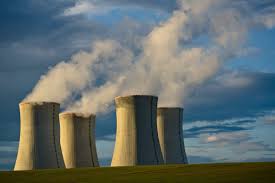Power Plant Scheduling (January 2022 ~ May 2022)
Objective: In this project, we developed an integer linear optimization model to make a schedule of power plant to produce the electricity based on the given condition.
Electricity has become a critical part of modern life. Hence meeting the energy demand, and at the
same time, saving several millions of dollars require power-plant schedules that uses the best
optimization models. ERCOT (Texas’ energy grid manager) has requested us to develop a model
that can determine the optimal schedule of the state’s power plants which minimizes the electricity
cost while guaranteeing that the electricity demand is met at all times.
ERCOT will provide the forecasted hourly electricity demand for one day, as well as the available
number of plants along with their respective operating characteristics.
ERCOT also wants the schedule to satisfy certain conditions as given below.
Condition 1: To avoid the power plants from producing less energy than they consume, as well as
to prevent the plants from overloading, each power plant must produce between a minimum and
maximum number of megawatts.
Condition 2: Once a power plant is turned ON, it must run for at least a power-plant-specific
number of hours before it can be turned back OFF. This enables the efficient use of each power
plant.
Condition 3: Once a power plant is turned OFF, it must be inspected and cleaned. Hence, the plant
must remain OFF for at least a power-plant-specific number of hours before it can be turned back
ON.
Condition 4: In the case that the actual demand is higher than the forecasted electricity demand,
the currently ON power plants must have enough production capacity to cover any unexpected
electricity surges of up to 12% above the forecasted demand.
Condition 5: To model the start-of-day, and end-of-day conditions, the model has to based on a
cyclic fashion. That is, it must be assumed that the provided 24-hour forecasts repeat every single
day.
The costs associated with operating any given plant is as follows. It must be noted that each of
these costs are plant specific.
1. A start-up cost, each time a power plant changes from an OFF to ON state.
2. A fixed cost per hour a power plant is ON.
3. A cost per hour for each megawatt that a power plant generates above its minimum
generation level.
After reviewing the objective, the information that will be provided, and the conditions that must
be satisfied, our team decided to formally define the parameters, the decision variables, the
objective function, and the constraints our model will use. It must be noted that the model we
developed was a linear model.
